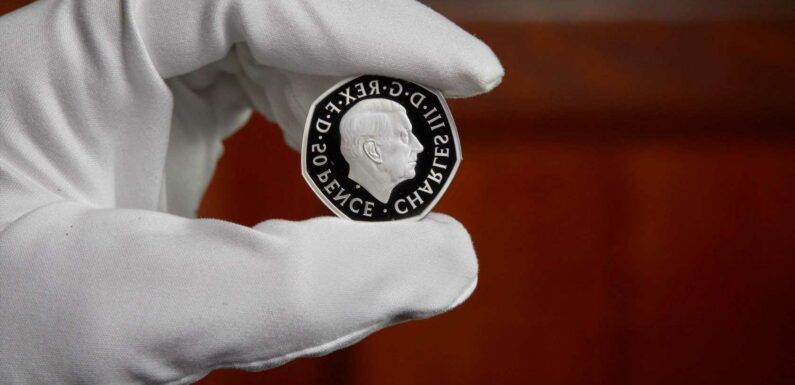
THE first 50p coin featuring King Charles III will go into circulation before Christmas, it has been revealed.
In the meantime, The Royal Mint is set to launch a commemorative coin collection to celebrate the life and legacy of Queen Elizabeth II.
Coin enthusiasts will spot some key design differences between the new 50p with Kings Charles' face on and the one featuring the late-Queen.
On the new 50p coin featuring King Charles III, the Monarch is not wearing a crown.
That's because Kings are not often depicted wearing a crown on coins – whereas Her Majesty Queen Elizabeth II had one.
The second major difference is that the King's face is pointing in the opposite direction to the late Queen's.
Read more in Money
When will King Charles’ face appear on bank notes and coins?
Rare 50p coins in circulation revealed including Kew Gardens worth up to £895
He's facing left – whereas the Queen was pointing to the right.
On the reverse side of the coin is the same design that appeared on the 1953 crown struck to commemorate her late-Majesty's coronation on June 2, 1953.
A crown is at the centre of four Royal Arms, which are in a crucifix arrangement.
Thistle, rose, leek and shamrock seen in between, and this design was created by the painter Edgar Fuller.
Most read in Money
Millions on Universal Credit could miss out on £360 pay rise
Martin Lewis warns that there's no £2,500 cap on energy bills
How your £400 energy bill rebate will start being paid within DAYS
Martin Lewis warns of mortgage "ticking timebomb" for millions of homeowners
The King's effigy has been designed by the sculptor Martin Jennings, who has represented famous writers and poets including Charles Dickens and George Orwell.
Anne Jessopp, The Royal Mint's chief executive, told The Sun that it is understood the King "is very satisfied".
King Charles approved the design in the past couple of weeks and also had his own input in the design, Ms Jessopp said.
Chris Barker from the Royal Mint Museum said: “Charles has followed that general tradition that we have in British coinage, going all the way back to Charles II actually, that the monarch faces in the opposite direction to their predecessor.”
He described the portrait as: “Dignified and graceful, which reflects his years of service.”
The coin is part of a special collection of coins released by the Royal Mint honouring the Queen Elizabeth II.
A commemorative version of the 50p coin will go on sale, alongside a £5 coin.
The £5 coin features the King's effigy on one side, while on the other features two portraits of the Queen side by side.
On the left is a depiction of the young Queen and on the right is a portrait of the Queen towards the end of her reign.
The crown that Her Majesty wore at her coronation is at the top of the coin, and at the bottom is her Royal Cypher "EIIR".
What will happen to coins with the Queen on?
The Royal Mint told The Sun that old coins with the Queen won't be pulled from circulation just yet.
Coins last for around 20 years, and coins with the Queen on them will be replaced within time with ones featuring the King on.
There are around 27 billion coins currently circulating in the UK bearing the effigy of Queen Elizabeth II.
It means you'll see coins with both the Queen's head and King's head on them in your spare change.
From January 1, the Royal Mint will only make coins on featuring Charles III.
The Royal Mint doesn't make notes – it only makes coins – but the Bank of England has confirmed notes featuring the King will enter circulation by mid-2024.
Read More on The Sun
I let my five-year-old bleach her hair, trolls say it’s ruined but she’s happy
Morrisons slashes 5p off a litre of fuel – but it won’t last long
His portrait will appear on existing designs of all four denomination of banknote – £5, £10, £20 and £50.
The new notes will be made of polymer, as paper £20 and £50 notes are due to be withdrawn on September 30, following the old £5 and £10 which were retired in 2017 and 2018 respectively.
The commemorative collection featuring the late Queen will go on sale on October 3 .
Source: Read Full Article










